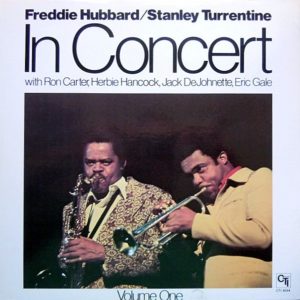Werckmeister harmóniák [Werckmeister Harmonies] (2000)
Arte (etc.)
Director: Béla Tarr
Main Cast: Lars Rudolph, Peter Fitz, Hanna Schygulla
Here is a movie that is all about what isn’t being said. The main character is János Valuska (Lars Rudolph). In the opening scene, in a bar full of drunks that is about to close, he organizes them to move about like planets to illustrate how a solar eclipse takes place. From there, he walks about his provincial Hungarian town to perform odd jobs the rest of the night. Those jobs include attending to his uncle György Eszter (Peter Fitz), a respected recluse who is developing a theory about how Western music was corrupted when Just Intonation was abandoned for the keyboard tuning of Andreas Werckmeister, a Fifteenth Century musical figure who developed a sort of paganistic theory about harmonious order based on planetary movement. A circus arrives, with a giant stuffed whale and “The Prince,” whose body is supposedly magnetic. Workers (all men) gather in the town square around the circus, where they light bonfires and mill about aimlessly. Their shiftless behavior suggests unemployment or at least underemployment. János visits the whale and is fascinated by it. One of his employers, Auntie Tünde (Hanna Schygulla), is upset by the men milling about and wants “order” restored. János walks back to the town square to investigate for her. He overhears The Prince (only his shadow is visible) arguing with the circus impresario. The Prince wants to be independent to make more money, and demands chaos and destruction — the film omits the term “creative destruction” but the analogy to that term coined by conservative economist Joseph Schumpeter as apparent by implication just as much as the allusion to the fascist notion of redemptive violence. It is also revealed that this out-of-town Prince is agitating the men in the town square. A group of those men set out as a mob and besiege a hospital, beating the patients and ransacking the rooms, until some of them encounter a naked man standing in a bathtub, at which point they pause, then withdraw. János eventually tries to leave the town (emigrate?), following the advice of a relative to escape the mob. Though he encounters a helicopter, and is next seen back in the town in a hospital.
The film is very clearly political commentary about the aftermath of the fall of the Soviet Bloc, with The Prince something like Western Capital entering the former Eastern Bloc landscape and enthralling the masses to pursue ends that the locals eventually and belatedly realize are stupid and senselessly viscous. And yet, the “order” that the visitors disrupt is absurd and insular. For a film with so little dialog, these implications of the symbolically-heavy visuals is impressively complex and nuanced.
The entire film is shot in 39 long shots/takes. That aspect is something of a directorial pissing contest whereby each director tries to have the longest shots/takes possible given technological limits (consider precedents like Soy Cuba [I Am Cuba] and Touch of Evil). Aided by digital camera technology, Tarr loses to Alexander Sokurov‘s Русский ковчег [Russian Ark] (2002), filmed in one continuous shot/take. There are definitely scenes in Tarr’s film that go on far too long, just for the sake of having long shots. But at the same time the long shots emphasize a kind of stasis and slow pace of life that is completely at odds with the abrupt chaos stirred up when the circus arrives — many scenes emphasize the difficulty that locals have acting (or reacting) quickly.
Much of the film presents a sustained view of a character — János — seeking to access the wonder of the outside world while naïvely finding himself burdened by the “strings attached” by the outsiders who bring with them such wonder in the form of the circus, and who impose a new set of interests on the locals as The Prince tries to harness and “monetize” the locals’ curiosity, intrigue, and discontent though destabilization. But the film is not just about that one character. It concludes with a focus on György Eszter. In the final scene the uncle examines the whale in the town square, the crude trailer in which it arrived now crumbled to leave its cargo exposed. He has given up his private theorizing and perhaps will now help to keep his family, friends and the town going, or whatever else is needed under the circumstances; the whale is a thing of wonder but is also meaningless. In this way he renounces what drove him at the beginning of the film and takes up a new path and new duties, unlike János, who is harmed and ultimately trapped by his desire to pursue things like the enigmatic whale. Each main character begins the film with desires that prove impossible in their implications, but only one of the two characters is willing to give up on what he once held dear and try to forge a new sense of meaning from the circumstances around him. The political implication seems to be to reject the ruthless onslaught of Western Capital in all its seductive, enticing yet illusory power and instead recognize the need for the townspeople to undertake the hard work of improving conditions for themselves from within the town.
Even wholly aside from the allegorical content and symbolism, the stark, austere images alone make this a memorable film.

![Werckmeister harmóniák [Werckmeister Harmonies]](http://rocksalted.com/wp-content/uploads/2016/07/werckmeisterharmonies-205x300.jpg)
